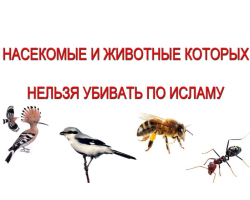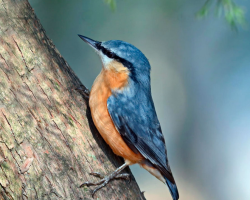From the memories of the bird Sea of \u200b\u200bSea, the sea immediately arises before the eyes. It is with him that these wonderful birds are associated.
Content
Speaking of seagulls, the sea is immediately recalled, because it is there, on the coast, that you are guaranteed to meet these birds - and, on any of the continents.
Few people know that seagulls, having their own kind and family in biological classification, nevertheless, belong to the rye -shaped detachment. Depending on the constant “registration”, they can be both migratory (flying away in the cold period to heat) and sedentary.
Bird Seagull: appearance, place of residence and food
- Worn high in the sky and scoring the district with loud cries, birds of Seagulls Not only they are very successfully fishing, diving behind the fish, but also take away food from vacationers, and with pleasure they rummage in garbage tanks, digging out food.
- There are many types of gulls, but they all differ quite bright, contrasting colors-with a predominance of white color with interspersed with a blue-black (on the head, wings, on the back). Young animals, as a rule, are striped, so as not to catch the eyes of predators on land and not become easy prey for them, but adult males and females do not differ from each other.
- These are quite large birds long 30 to 80 cm, and they can weigh both 150 g and as many as 2 kg. Their characteristic feature is Long strong wings (their silhouette in the sky will not confuse with anyone else) and a small tail. The wings of the seagulls are arranged so that they allow the bird a long, maneuverable flight with a high speed of up to 110 km/h. They can take sharp jerks and sharp stops, virtuoso turning, all kinds of peaks and pirouettes in flight.

- Because the seagulls - water -loving birds, That nature took care of their waterproof plumage and a densewathing, as well as such a beak structure (with an acute hook at the ending and cloves on the sides), which allows you to grab and keep slippery, dull fish for a long time. In addition, their the paws are equipped with membranes (like ducks and geese), which allows them to stay well on the water surface, develop high speed when swimming and dive perfectly with their heads. But unlike ducks, they run very quickly on land.
- As already noted above, seagulls are water -loving birds, so they settled on the coasts around the world – sea \u200b\u200bor freshwater (rivers, lakes, reservoirs). Settling not far from human settlements, they can winter perfectly on the spot, looking for food on landfills or begging (or stealing) it in people whom they absolutely do not fear.

- Food of gulls Various enough, which allows them not to starve under any conditions. In the wild in reservoirs, they prefer to fish from the air or find jellyfish, crabs, insects, all kinds of mollusks in the coastal zone, which they learned to learn from the shells in a variety of ways.
- Seagulls are excellent dives, seeing a fish, they fall into the water with a stone and do not let their prey come to their senses. They also fly above the surface of the water, and the lower jaw of the beak is lowered into the water. If an insect or fish comes across, the seagull closes the jaw and swallows, what I caught. It is excellent for them to catch prey on the fly.
- On the shore they feed on grain, seeds and fruits of plants, as well as small rodents, chicks and eggs of other birds, lizards and insects. They also do not disdain all kinds of discharges, food waste and carrion.
- Daily diet of seagulls 400 grams of various food.
- Seagulls omnivorous birds. They can be fed even with bread. Having smashed food, they can carry a flock behind the boat where they are fed.
Bird Seagull: Types
There are seagulls of various types in nature:
- Silver gull - A large bird is over half a meter long, found in the northern hemisphere on the coasts of water bodies, and recently it began to even nest on the roofs in megacities. This type of gulls is aggressive. These are real sea robbers.

Silver - Black -tailed -A medium-sized bird, young animals are distinguished by a dark brown color of the plumage. Lives in the east, in Alaska and in North America.

With a black tail - Gray - A small bird weighing up to 400 grams, the tail is distinguished by the presence of a black flat with white frame. Lives on the coast of the Pacific Ocean, in South America, Peru and Chile.

Gray - Krasnomorsk or white -eyed - The average representative of the family with white stripes under and above the eyes. He lives, as the name implies, on the shores of the Red Sea, as well as in the UAE, Turkey, Israel.

With stripes - Sizya - It differs in longevity (up to 25 years). You can meet it on the territory of North America and Eurasia.
- Odouen - A rather rare bird living on Italian, Spanish, Greek, Algerian lands. The main number of individuals are recorded in Morocco.

Rare - Delaware - A slender migratory bird with a disproportionately large head. This is a typical representative of the North American birds.
- California Seagull - Almost indistinguishable from silver, except for the yellow color of the key and legs. Lives with a "constant residence permit" in North America.

From California - Sea - The largest birds weighing up to two kilograms and a wingspan to almost two meters. Live on the coast of the Atlantic in Central Europe.
- Dominican - It differs in a red spot on a yellow beak. It is found in South America and Africa, as well as in the southern ocean zone.

There are also seagulls: Serking, Western, Cortez, polar or Icelandic, Tyer, Mediterranean, laughter or steppe, Armenian or Sevan silver, black -headed laughter, lake or ordinary, brown -headed, gray -headed, hartlaub, Australian, red -headed sea pigeons, black -headed, relict, small ones.
There are about a hundred species of gulls throughout the world. Organized scientists divided them into 22 genus. About 20 different types of gulls are found in Russia. They mainly live in Siberia, in the Far East and in the European part of Russia.
Bird Seagull: propagation, relationship in the pack
- Seagulls - Very social birds, which live quite large families (colonies), which include adult couples and younger young animals. The traditional life expectancy is up to 20-23 years. The nests are driven on the surface of the earth. Rarely change the places of their nesting. This is mainly due to changes in climatic conditions.
In the afternoon, adults and grown individuals are sent to fed areas, and in the evening they return home (in a safe place for nesting) - sometimes these two territories are located far enough from each other.
- Puberty in gulls It can advance at the age of one year, sometimes ripening lasts up to four years. Having formed a pair (usually for life), the birds of the seagull begin to make a nest (from all kinds of garbage and discharges) - not far from the other relatives. During courtship, the male brings his chosen one in the form of food, he also chooses a place to build a joint dwelling.
- When a cozy nest is ready, the female lays a maximum of three eggs, which the couple will hatch in turn for about a month. Although, of course, the female sits on eggs more time, and her husband at this time protects the territory. If something bad happens with eggs (someone ate), then the female will immediately lay new ones.
- When the offspring is born, heavy days come for parents, because the kids love to eat very much - at least five times a day.
- Adult seagulls have spots on their beaks, so that the chicks peck them in these spots, thereby encouraging their parents to abide food in their mouths.

- Thanks to the excellent appetite, the chicks quickly grow up and after ten days they begin to make the first sorties from the nest, and after another month - trial flights begin.
If any of the members of the pack notes the danger from the outside, then a crazy gallivee rises and the entire colony soars into the sky, dropping a huge amount of litter on the enemy.
Bird Seagull: interesting facts
- Seagulls quench the thirst for salt water. This is due to the fact that the stalls of sea gulls are able to purify water from salt.
- Interesting fact: Over the day, 60 thousand winged gulls of the Black Sea coast eat over 10 tons of insects. In addition, seagulls are not averse to ruining the nests of other birds or taking away legal prey from someone.
- For sailors, the appearance of gulls means that the shore is close.
- Seagulls show friendly solidarity in trouble. If there is an object of hazard, birds cause a commotion, soar into the air over the object of danger with the whole colony, squeaks disgustingly and try to pour it as a large amount of litter as possible.
- However, seagulls in pursuit of food They can attack the chicks of the same seagulls as prey.
- The birds of the seagull are not too afraid of a personand they also fly up very close, if you show her food, they can even tear out food from their hands.
- Another fact indicates thatthat if a person has entered the territory that seagulls consider his own, then he is subjected to the same attack of birds as in the case of a different danger.
- In large cities of the Seagulls Create significant competition on landfills to ravens, pigeons and other birds to the garbage holders.
- Seagulls drop their plumage (fed) 2 times a year - in the spring (partial molting) and autumn (feathers and fluff are completely replaced by new plumage).
- The weight of a small seagull On average, about 100-150 grams, and a large one can be more than 2 kilograms.
- All seagulls except Galapagos, daytime birds, hunt during the day and lead a day lifestyle. The Galapagos gull is hunting at night. Its prey is fish, mollusks, sea stars and small octopuses.
- Seagulls coexist well with colonies With other birds - cormorants, herons, wild ducks.














An interesting article, thanks to the author. I just want to add that seagulls are not hermit, and many mistakenly think that they like to eat carrion.